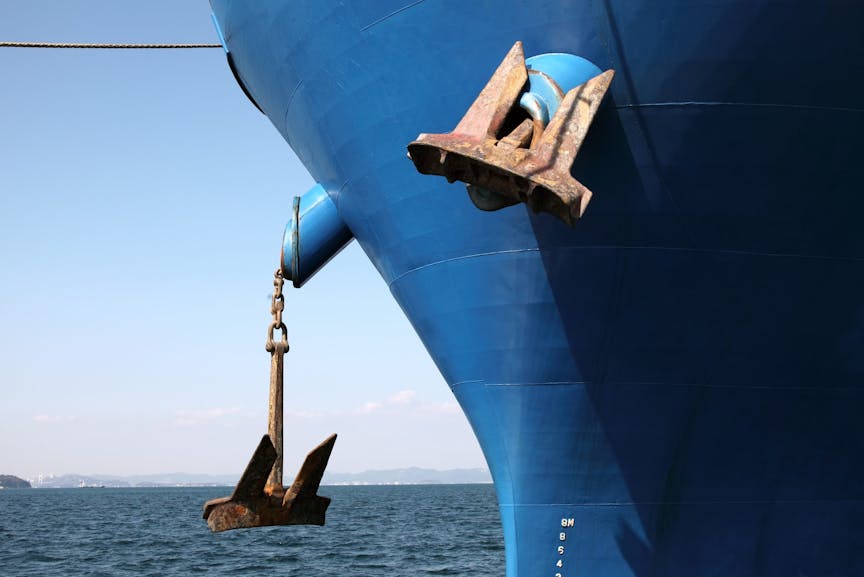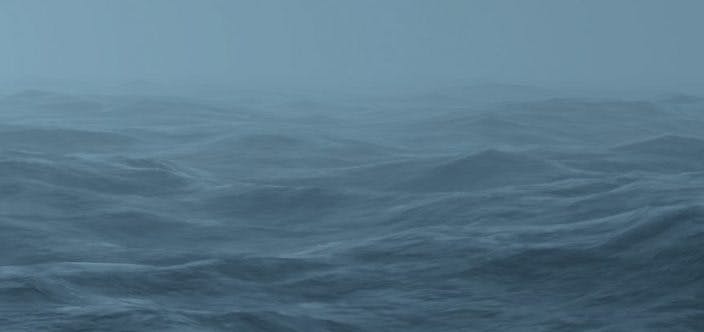Safe Anchoring
Anchoring is an often-repeated routine operation that concerns many vessel types. During the last six months, different anchor and anchoring-related incidents have increased substantially all over the world. The common denominators for these recent incidents include poor knowledge regarding secure anchoring (i.e. what keeps a vessel at anchor), unfamiliarity with the design limits of anchoring equipment, inadequate anchor maintenance, and a lack of best anchoring practises. This month, we will highlight each of these themes and provide practical guidance for safer anchoring.

Anchoring Principles
It is important to acknowledge that vessels anchor to the weight of the catenary in the anchor cable and not to the anchor, length of anchor cable, brake, stopper or any other anchoring equipment. Understanding this key principle can help prevent dragging anchors and anchoring equipment failures caused by excessive loads and strain altogether. The catenary in the cable is the length of anchor cable that curves upwards in an arc from the seabed up to where it emerges from the sea surface into the hawse pipe.
Catenary:

V = Vertical Length of the Anchor Chain
H = Horizontal Length of the Anchor Chain
Scope = The Total Length of the Anchor Chain
Catenary = The Length of Anchor Cable that curves upwards in an arc
The best anchoring effect is achieved when the anchor cable curves gently so that most of the catenary lies under the surface. In this scenario, it is gravity alone that acts vertically down on the length of catenary that anchors the vessel – nothing else. If the length of the anchor cable catenary is too short, the curve is too steep for gravity to have a sufficient effect in order to keep the vessel at anchor. When the strain on the anchor cable is high, the anchor will be raised from lying flat on the seabed and dragged in the direction of load. Even if a lengthy stretch of anchor cable is paid out, under high load the anchor cable will point straight from the hawse pipe to the sea, which indicates that the limit of gravity on the catenary anchoring the vessel has been exceeded. A straight lead, regardless of cable length, indicates that the vessel is now only held in place by the anchor, which may already be dragging. Vibration in a straight cable may be a sign of the anchor dragging. Generally, a straight anchor cable lead indicates the need to pay out more cable so that a catenary curve is re-established and gravity is restored as the force anchoring the vessel to her cable. A straight cable lead also indicates that the cable is affected by excessive forces, which are outside of the design parameters. Source: CHIRP 12/2017
In order to ensure an adequate catenary, enough anchor cable needs to be paid out. There are different rules of thumb to go by, based on vessel type, holding ground, anchor type, and environmental conditions. In accordance with the IACS design parameters, we prefer to recommend using the “Scope” concept. The “Scope” of the cable is defined as the ratio of the length of cable paid out to the depth of water. The guideline scope is 6 to 10. Applying the correct scope for the anchor is important in terms of obtaining maximum holding power for the anchor, particularly in rough weather conditions.
Other variables to consider include swinging room, distance to other vessels or other objects, vessels being loaded or in ballast, currents, tide, anchoring location (open/sheltered), and the latest weather forecast. It is also pivotal to consider the windlass lifting capacity, which by IACS design criteria is 82 meters slack chain. Too much chain in deep water (> 50m water depth) might lead to problems, and in the worst case even to the loss of anchor and/or a damaged windlass motor.
Design Limits
The anchor of a regular merchant vessel (including passenger vessels) is designed only for the temporary mooring of the vessel within a harbour or another sheltered area! The anchoring equipment is not designed to hold a vessel in place offshore in bad weather or to stop a vessel from drifting.
The IACS design criteria for single anchor holding capacity (maximum environmental loads) in harbour or in sheltered waters are:
Wind velocity up to 25 m/s – steady wind.
Current velocity maximum 5 knots.
No waves.
Equivalent conditions outside harbours and sheltered waters:
Wind velocity up to 11 m/s – steady wind.
Current velocity maximum 3 knots.
Significant wave height maximum 2 meters.
Windlass motor performance:
Minimum lifting capacity of 3 lengths of chain (shackles), i.e. 82.5 m and the anchor.
Windlass brake design loads:
45% of chain breaking load when a chain stopper is installed.
80% of chain breaking load when no chain stopper is installed
If forecasted environmental and meteorological conditions exceed these parameters, do not anchor or leave the anchorage.
Maintenance
Routine maintenance of the windlass and anchoring equipment should be carried out according to the manufacturer’s instructions and to include but not be limited to:
- Greasing and inspection of all moving parts.
- Inspection of anchor-securing equipment, such as chain stoppers and chain cable tensioners.
- Inspection, adjustment, and overhaul of windlass brakes (the whole brake assembly), bands and linings, and cable stoppers.
- Inspection of anchor, D shackles, shackle pins, crown pin, joining shackles, flukes and shank.
Anchoring Best Practices
Consider the following for safe and successful anchoring operations:
- Traffic and congestion in the area and backup option
- Water depth – enough chain scope for good anchoring
- Safe distance to underwater cables and pipelines
- Consider seabed and ambient conditions, i.e. nature of the sea bottom, weather and tidal conditions.
- Proximity of dangers and other vessels and length of stay; use designated anchoring areas as applicable
- Windlass may not be able to recover more than three lengths of anchor chain (82.5m)
- Crew members should consult the anchoring equipment manufacturer’s manuals for instructions regarding the chain lifter, windlass, anchor chain and anchor.
- Crew members should wear appropriate personal protective equipment (PPE) during anchoring operations.
- Recommended ship speed for anchoring is 0.1-0.5 knots astern.
- Once the vessel is anchored, verify that the chain becomes slack (anchor is holding) and tight again for several consecutive cycles.
- Once the anchor is confirmed and holding, give slack between the chain lifter and the chain stopper (if fitted) to avoid direct jolts to the windlass brake.
- If the anchor is dragging, heave up the anchor and re-anchor.
- Consider main engine stand-by in case weather conditions, objects in the proximity of the vessel or any other factors create uncertainty regarding anchoring safety.
- When heaving up the anchor, maneuver vessel after the chain only to lift the slack chain – vessel is only fitted with chain lifter!
- Once the anchor is heaved and “at home”, secure the anchor tightly in its pocket to avoid slamming and damages.
- If you encounter rough weather – do not anchor or leave the anchorage.
Link for further insights and best-practice development:
OCIMF – Estimating the Environmental Loads on Anchoring Systems


